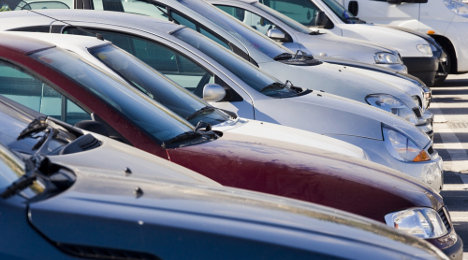Incentives rise in July as leasing activity softens

With new-vehicle transaction prices climbing, automakers are ramping up incentives. In return, models are rolling over the curb at a pace that multiple analysts who sent their assessments to Auto Remarketing believe to be plateauing.
One of the most relevant observations for used-car managers is what Edmunds.com noticed about new-vehicle leasing activity in July since those vehicles likely will be prime certified pre-owned inventory options in about 24 to 36 months.
After touching on 0 percent financing availability, Edmunds.com executive director of industry analysis Jessica Caldwell said, “We’re also seeing indicators that lease deals were much harder for car shoppers to come by in July as lease penetration dropped to 27.8 percent, the lowest level since May of 2015.
“While some of the softness in leasing can be attributed to seasonal fluctuations and the fact that (General Motors’) lease penetration dropped below 20 percent, lease customers are very price sensitive and may need a bit more of a nudge than they’re currently getting to convince them to close the deal,” Caldwell continued.
Leasing certainly is an option for consumers looking to maintain affordability as new-vehicle transaction prices keep moving higher — a development noticed by both Kelley Blue Book and TrueCar.com.
TrueCar estimated the average transaction price (ATP) for a new light vehicle was $32,518 in July, up 1.3 percent from a year ago. Average incentive spending per unit rose by $159 to $3,225. The ratio of incentive spending to ATP was 9.9 percent, up from 9.6 percent a year ago.
“What is interesting to note is that while overall national retail spending remains strong and consumer confidence is relatively unchanged, we are probably seeing some attempts in incentive spending to boost auto sales beyond its organic demand,” said Oliver Strauss, TrueCar’s chief economist.
The analysts over at Kelley Blue Book estimated average transaction price (ATP) for light vehicles came in even higher in July. They pegged ATP at $34,264 as prices for new vehicles increased by $832 year-over-year and $82 compared to the previous month.
“Low interest rates, longer loan terms and increased leasing are helping consumers afford their monthly payments, which would be upwards of $550 per month on a traditional 60-month term,” Kelley Blue Book analyst Tim Fleming said.
If buyers are entering into a retail contract instead of a lease, it appears they’re not getting 0 percent APR at the clip that OEMs sometimes will go to turn new metal, especially in the summertime.
Caldwell said, “0 percent financing deals were much more common last summer than they are now: 12.9 percent of new car loans in July of 2015 were 0 percent, while only 10.2 percent of loans were 0 percent this July.”
The July slowdown evidently isn’t an anomaly, either.
The July Kerrigan Auto Retail Index — composed of the seven publicly traded dealer groups with operations focused on the U.S. market — rose 18.28 percent in July, significantly outperforming the S&P, which analysts said rose 3.56 percent for the month. However, Kerrigan Advisors explained that industry news was “very mixed” for the month so much of this recent rise was “likely a recovery from being over-sold in the prior month.”
In fact, the KAR Index fell 11 percent in June, and year-to-date it’s now off by 10.34 percent.
In its index report, Kerrigan Advisors also mentioned that to this point Ford became the first major automaker to state that the U.S. auto market’s growth was ending. Kerrigan Advisors added the equity research team at Barclays changed its outlook for the U.S. auto market from “plateau” to “eroding plateau.”
Brian Johnson of Barclays said, “Ford acknowledged for the first time any of the pressures we have been talking about for the past few weeks. There’s a big difference between analysts and writers saying this market is poised to get softer, and hearing it from one of the largest players in that market.”
For dealerships looking for an element to signal a turnaround, Stifel chief economist Lindsey Piegza didn’t exactly offer one. Piegza discussed the latest trends regarding how buyers are going to pay for the vehicles they might secure.
Piegza recapped that personal income rose 0.2 percent in June, slightly less than expected, according to Bloomberg. She continued that compensation rose 0.3 percent in June, thanks to a 0.3 percent rise in the wage and salary component.
Piegza also pointed out disposable income increased 0.2 percent in June. Year-over-year, personal income increased 2.7 percent at the end of the second quarter, down from a 2.9-percent annual pace reported the month prior and even further below a near 4 percent growth rate at the start of the year.
“Bottom line,” Piegza began, “as the latest Q2 GDP report showed, the U.S. consumer was doing the heavy lifting April to June, keeping the domestic economy afloat. In other words, the U.S. consumer appears to be on very solid footing, at least for now.
“The continued deceleration of income growth, however, coupled with an ongoing lack of business investment suggests the consumer may face additional hardship in the second half of the year, potentially restraining spending activity below these more recent rates of consumption,” she continued. “After all, without the business investment and development needed to spur robust job and income growth, the consumer will be hard-pressed to maintain a near 4 percent spending pace heading into the second half of the year.”
So perhaps if potential buyers don’t have as much in their wallets when they’re at the showroom, perhaps a point made by KBB’s Fleming could be a silver lining for the used department.
“As the price gap to late-model used cars increases, more shoppers may turn to the pre-owned market for their next vehicle, which could mark a big departure from the new-car sales growth the industry has seen during the past five years,” he said.

 View The Latest Edition
View The Latest Edition

